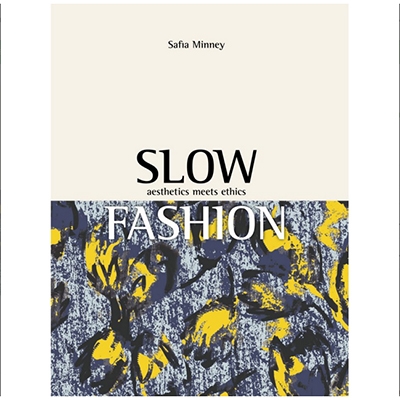Your Essential Guide To Environmental Reading
Make the most of cosy evenings in by picking up an eye opening book. This is our essential guide to environmental reading.
Have you spent most of your lockdown scrolling through Instagram or laying in front of the TV watching box sets or Netflix documentaries? Why not switch off and make a start on that reading list you’ve been meaning to get to. It’s the perfect time to expand your knowledge of environmentalism. By choosing these titles, you’re doing a good thing for your mind and for the world too. Do you want to dig deeper into the consequences of the indiscriminate use of pesticides? Are you considering taking a more in-depth look at what’s behind a cheap pair of jeans? How much do you know about environmental racism and the important role indigenous people play in protecting our planet? This lockdown reading round-up is perfect for a conscious, yet uplifting afternoon. Yes, the world is aching, but solutions are just behind the door. And a lazy afternoon at home has never been this revolutionary.
Cradle To Cradle
“Reduce, reuse, recycle”. This is the standard “cradle to grave” manufacturing model dating back to the Industrial Revolution that we still follow today. And it’s killing our planet. Chemist Michael Braungart and architect William McDonough challenge this status quo and put forward a manifesto for an intriguing and radically different philosophy of environmentalism. In this thought-provoking read, the authors propose that instead of minimising waste, we should be striving to create value. Waste needs not to exist at all. How can we achieve this? By rethinking everything, from carpets to corporate campuses, through pragmatic creativity and design.
Cradle to Cradle by Michael Braungart and William McDonough, £8.99 at Waterstones
To Die For: Is Fashion Wearing Out The World
Lucy Siegle, the Observer’s ‘Ethical Living’ columnist, is here to expose the social and environmental impact of the fashion industry. She manages to achieve full transparency by examining the story and production process behind our clothes. In this harsh portrayal of the 2nd most polluting industry in the world, To Die For offers a “very plausible vision of how green could really be the new black”. Focusing on our obsession for both big-name labels and cheap fashion, this book is for the unaware customers that are seeking to understand what’s behind their latest purchase. Far from outlining a future of drab, ethical clothing, Lucy Siegle believes that it is indeed possible to be an ‘ethical fashionista’, simply by being aware of how and where (and by whom) clothing is manufactured.
To Die For: Is Fashion Wearing out the World? By Lucy Siegle, £12.99 at Waterstones
Silent Spring
Now recognised as one of the most influential books of the twentieth century, Silent Spring became a milestone on the consequences of the use of pesticides. By exposing the consequent destruction of wildlife, Rachel Carson’s Silent Spring alerted a large audience to the environmental and human dangers of indiscriminate use of pesticides. Despite initial cynical feedback from the press and attempts by the chemical industry to ban the book, Rachel Carson succeeded in creating a new public awareness of the environment which led to changes in government and inspired the ecological movement. It is thanks to this book, and the help of many environmentalists, that harmful pesticide such as DDT was banned from use in the US and countries around the world.
Silent Spring by Rachel Carson, £9.99 at Waterstones
As Long As Grass Grows: The Indigenous Fight For Environmental Justice
Environmentalism isn’t new. Indigenous people have been fighting for their land and our planet for hundreds of years. In 2016, the Water Protector protests at Standing Rock showed the world how indigenous Americans have to fight hard for the land that is rightfully theirs to remain healthy. Indigenous researcher and activist Dina Gilio-Whitaker explores this history in her book ‘As Long As Grass Grows’. Standing Rock was a fight for water security for the Sioux Tribe, but land disputes and struggles for sacred site protection are all common too. She highlights the pivotal role that indigenous women in particular play in resistance to government and corporate intrusion onto their land. This rich history of fighting for environmental justice must serve as a blueprint, she argues for future environmental activists.
Slow Fashion: Aesthetics Meets Ethics
Slow Fashion offers ethical consumers, creatives and entrepreneurs alike a glimpse into the innovative world of the eco-concept store movement, sustainable fashion design and a business that puts people, livelihoods and environmental sustainability central to everything it does. Safia Minney, former founder of People Tree, argues that the future of fashion boutiques lies in curating the best in sustainable Fair Trade fashion and organic lifestyle products. Together with vintage, second hand and local produce, we can create exciting products that don’t damage the planet. Each with a story to tell, these products will naturally promote a healthy economic lifestyle and the wellbeing of our planet, our minds and our bodies. It will also inspire a growing sustainability sector – one that is shaping big business and promoting better business practices.
Slow Fashion: Aesthetics Meets Ethics by Safia Minney, £14.99 at Waterstones
Drawdown
Drawdown is the point in the future where levels of greenhouse gases begin to decline, allowing the world to cool down. From revolutionising how we produce and consume food to educating girls in lower-income countries, just a few solutions that could be deployed collectively on a global scale over the next thirty years. Solutions that would help slow the earth’s warming, and help it reach drawdown. For the first time ever, an international coalition of leading researchers, scientists and policymakers have come together to offer a set of realistic and bold solutions to climate change. All of the techniques described here – some well-known, some you may have never heard of – are economically viable, and communities throughout the world are already adopting them.
Did This Put A Smile On Your Face? Why Not Subscribe?
If you enjoyed this then theres plenty more on our email newsletters that you'll love. Whether you're a sustainable newbie or an eco conscious pro, our bi monthly emails will inspire you to live sustainably and ethically.











Trackbacks/Pingbacks